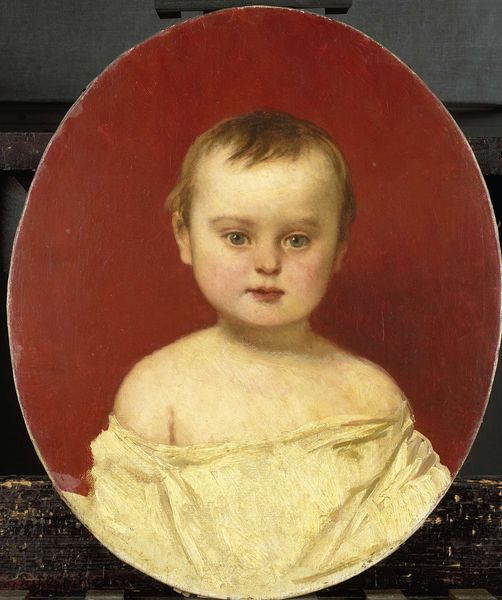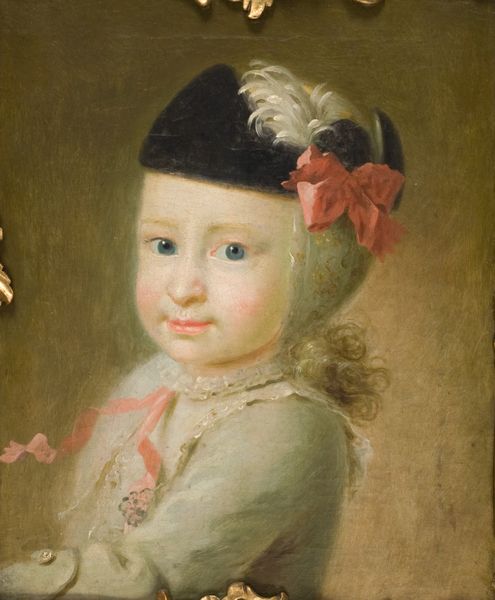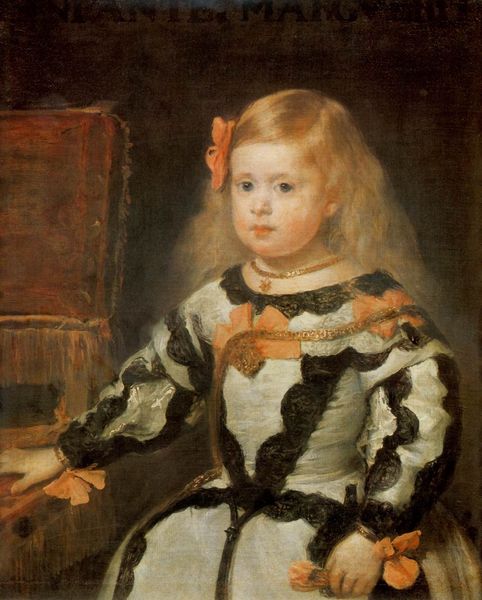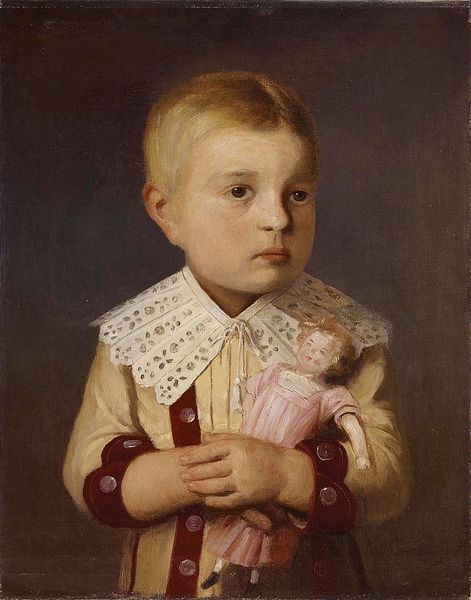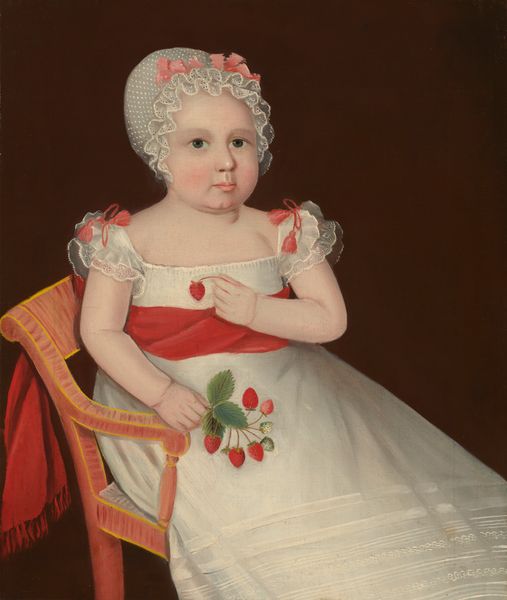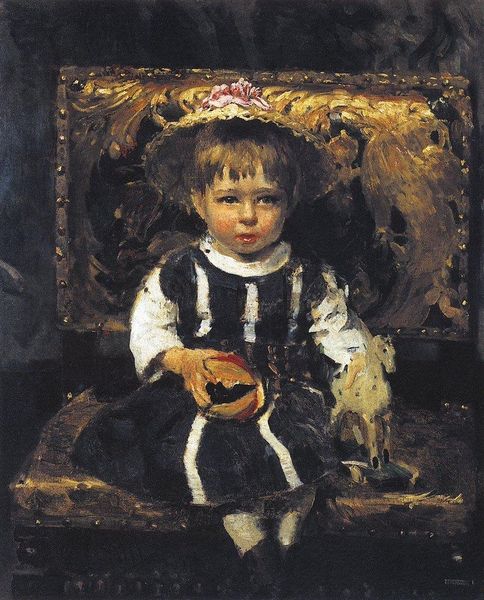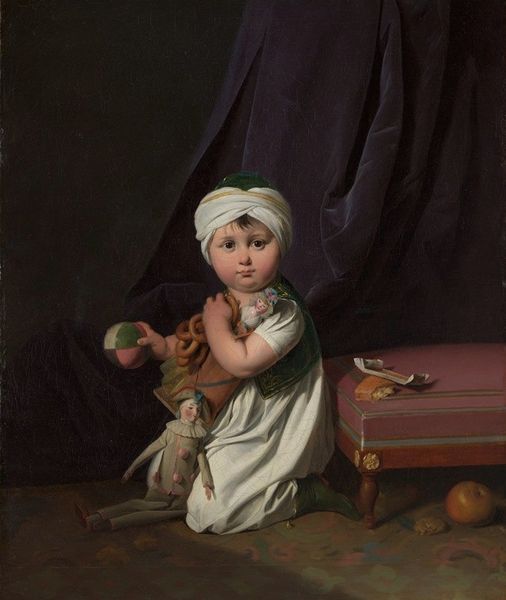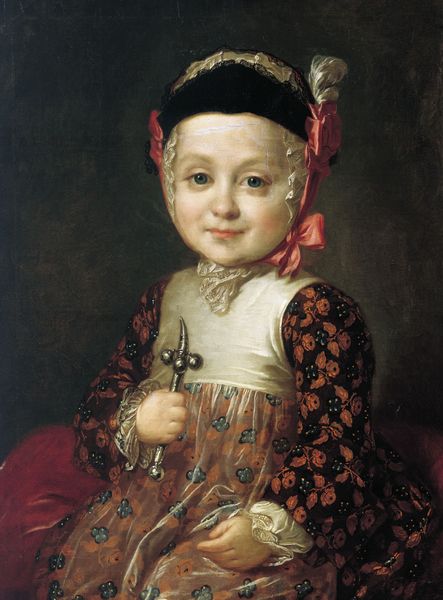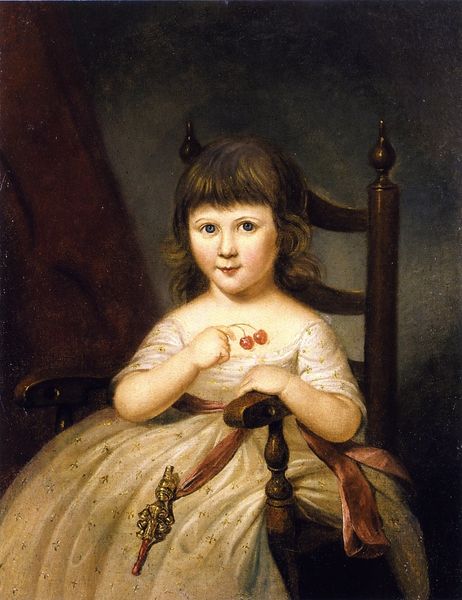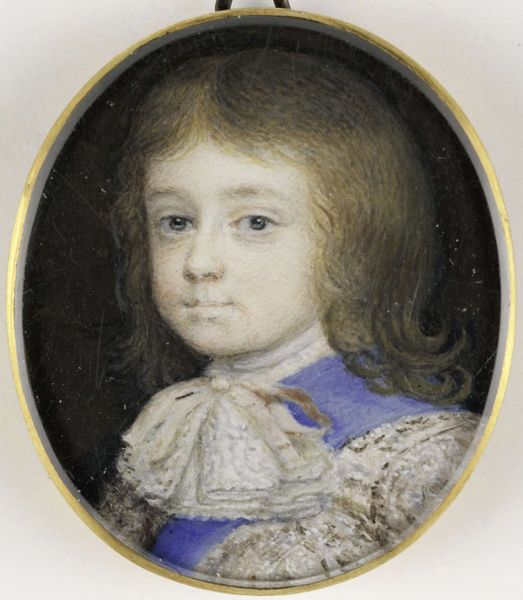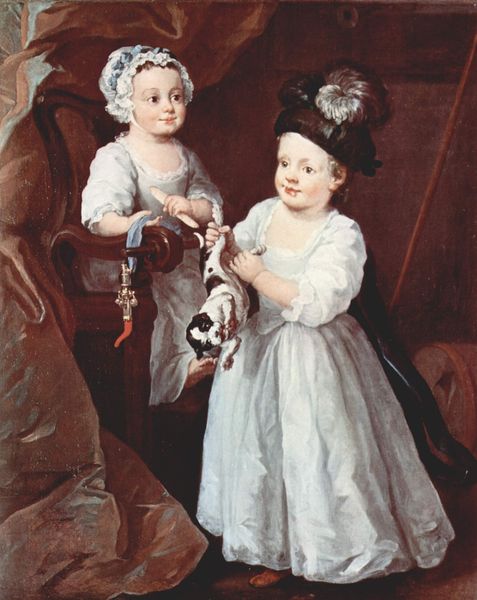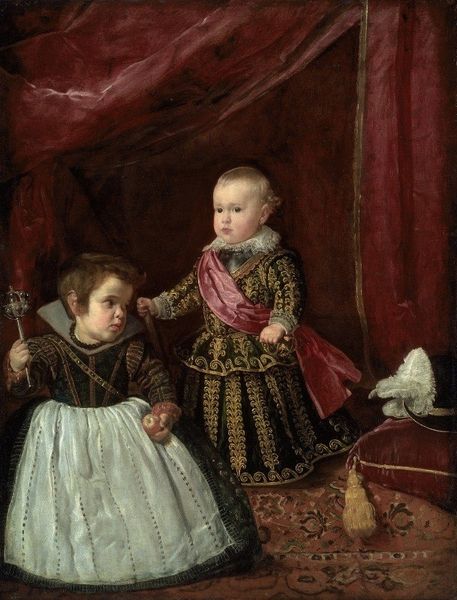
painting, oil-paint
#
portrait
#
baroque
#
painting
#
oil-paint
#
child
#
history-painting
Copyright: Public domain
Curator: Diego Velázquez painted "Prince Philip Prosper, Son of Philip IV" in 1659. It's currently housed in the Kunsthistorisches Museum in Vienna. It's a prime example of Baroque portraiture. Editor: Gosh, isn't it a somber sort of affair, though? Even the little dog peeking out from the chair looks like he's contemplating the meaning of life! Curator: In its depiction of royal power and dynastic succession, the painting raises some interesting questions about gender roles. Royal male heirs such as Prince Philip Prosper were strategically groomed to continue their fathers' bloodlines. Editor: Oh, absolutely. Little Prosper's fate was sealed at birth. You can see it in his face: like a child playing dress-up but realizing the weight of the costume. I find a real vulnerability there. I wonder, what kind of life was this kid living? Curator: The visual symbolism reinforces those expectations of leadership. You have the rich, dark colours contrasting with the infant prince's fair skin, all suggesting a position of privilege and control. This depiction also perpetuates the social status and historical narrative of the monarchy and emphasizes the role of the royal family. Editor: See, for me, that stark contrast only reinforces the ephemeral nature of childhood. Those ornate details—the little golden bells dangling from his dress, that slightly ridiculous wig— they become bittersweet. It feels like the image is telling you this boy, despite the grand trappings, won’t stay like this for very long. Curator: You're absolutely right to point out the ephemeral, as it can speak to ideas of class structures and expectations. The portrait becomes not just a picture of an individual, but an index of historical values regarding power, status, and even mortality. Editor: Ultimately, even though it's been staged to broadcast dynastic strength, Velázquez has gifted us with a little bit of soul peeking through the official facade. I think the heart recognizes the shared humanity regardless of time, or class. Curator: Indeed, a reminder of the complex social fabrics from which identity, family, gender, and power emerge. Editor: Cheers to that! A peek behind the velvet curtain.
Comments
No comments
Be the first to comment and join the conversation on the ultimate creative platform.

